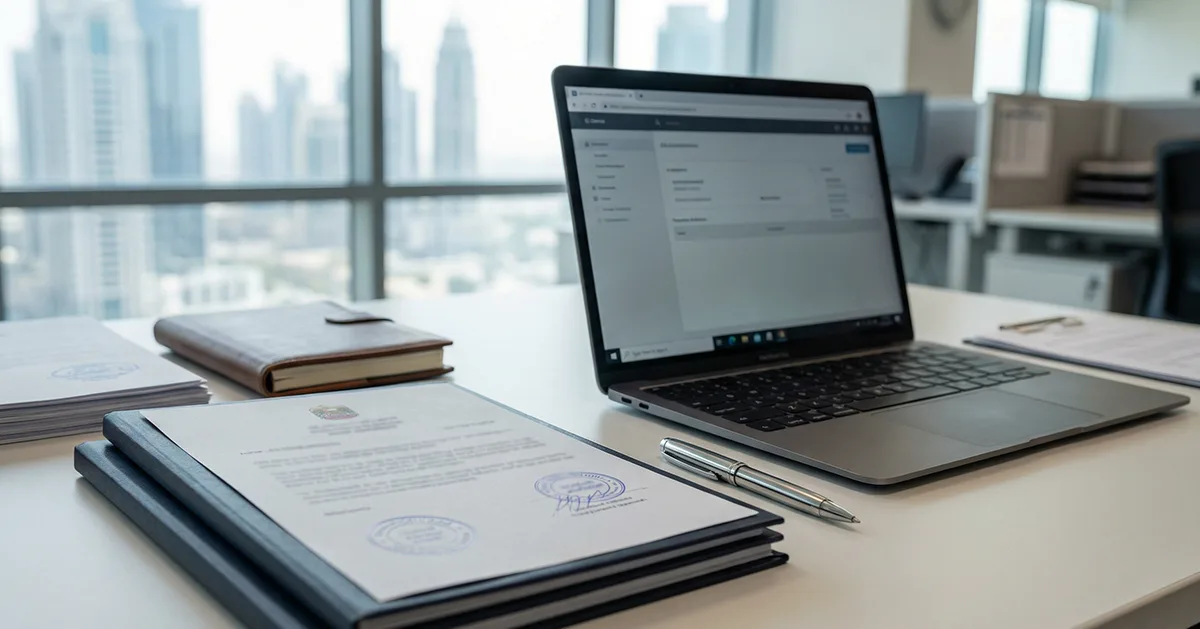
Introduction
Imagine you order a smartphone online, and within 24 hours, it’s at your doorstep. Ever wondered how? The answer lies in an efficient logistics business that ensures seamless movement from warehouses to consumers. In 2024, India’s logistics trading market is expected to reach $380 billion, making it one of the fastest-growing industries globally (IBEF Report, 2023). With the rise of e-commerce, third-party logistics (3PL), and supply chain innovation, entering the logistics trade is more lucrative than ever.
From profitable logistics business ideas like warehousing and last-mile delivery to heavy investments in infrastructure, starting a logistics line of work requires detailed planning. Companies like Delhivery, Rivigo, and BlackBuck have disrupted traditional models by leveraging AI and automation. This guide will take you through everything—from the investment required for the logistics business to overcoming challenges in the logistics sphere industry and scaling effectively.
Also Read: Profitable Import Export Business Ideas To Start Today
What is a Logistics Business?
A logistics business is the backbone of supply chain management, ensuring the smooth transportation, warehousing, and delivery of goods. The industry includes multiple services such as freight transportation, inventory management, packaging, and distribution.
Key Functions of a Logistics Business:
- Transportation – Moving goods via road, rail, air, or sea.
- Warehousing – Storing goods before distribution.
- Inventory Management – Tracking stock levels to avoid shortages.
- Order Fulfillment – Ensuring accurate and timely deliveries.
Examples of Logistics Businesses in India:
- Delhivery – A leading logistics tech startup handling e-commerce deliveries.
- Blue Dart – Specializes in express air and ground courier services.
- TCI Express – Focuses on time-sensitive logistics solutions.
- Rivigo – Uses relay trucking for faster and cost-efficient deliveries.
India ranks 35th in the World Bank’s Logistics Performance Index (LPI) 2023, improving due to digitalization and government policies like Gati Shakti Yojana.
What Are The Types of Logistics and Supply Chain Services?
Understanding the different logistics business models is crucial for selecting the right niche. Here are the most profitable logistics business ideas:
- First-Mile Logistics – Transporting goods from manufacturers to warehouses.
- Last-Mile Delivery – Delivering goods to end customers, is crucial for e-commerce.
- Cold Chain Logistics – Managing temperature-sensitive goods like food and pharmaceuticals.
- Freight Forwarding – Acting as intermediaries between shippers and carriers.
- Third-Party Logistics (3PL) – Managing supply chains for businesses.
- Reverse Logistics – Handling returns and product recycling.
- E-commerce Fulfillment Services – Specialized logistics catering to online businesses.
- Bulk and Heavy Freight Transport – Moving oversized goods across regions.
Case Study: How Amazon India Optimized Its Supply Chain
Amazon uses AI-powered logistics management to reduce delivery times and enhance last-mile delivery. Their Fulfillment by Amazon (FBA) model allows sellers to store inventory in Amazon’s warehouses, enabling faster shipping and seamless logistics.
How to Start a Logistics Business in India?
Steps to start a logistics business in India:
Step 1: Market Research & Business Model Selection
- Analyze the demand for specific logistics services in your region.
- Identify profitable logistics business ideas based on industry trends.
- Study competitors like Blue Dart and Mahindra Logistics.
Step 2: Register Your Business
- Choose a legal structure (LLP, Pvt Ltd, or OPC).
- Register under GST and obtain necessary tax registrations.
Step 3: Get Licenses & Compliance Certifications
- Acquire legal requirements for the logistics business, including FSSAI (for food logistics) and AEO (for international trade).
Step 4: Investment & Infrastructure Setup
- Determine the investment required for the logistics business – approximately ₹50 lakh to ₹10 crore, depending on scale.
- Set up warehouses, offices, and fleet management systems.
Step 5: Digitalization & Software Implementation
- Use AI-based route optimization tools.
- Implement warehouse management systems (WMS).
What Are The Licenses and Registrations Required for a Logistics Business?
To operate legally, securing the right legal requirements for the logistics business is essential:
- Company Registration – Private Limited, LLP, or Sole Proprietorship.
- GST Registration – Mandatory for taxation compliance.
- Trade License – Issued by municipal corporations.
- FSSAI License – Required for food and perishable goods transportation.
- RTO Permits – For commercial fleet operations.
- AEO Certification – For international freight forwarding.
Failure to comply can result in fines of up to ₹10 lakh or business suspension.
What Are The Investment and Infrastructure Requirements?
The investment required for the logistics business varies:
- Small-scale (Last-mile delivery startups): ₹10-50 lakh.
- Mid-scale (Warehousing & 3PL services): ₹1-5 crore.
- Large-scale (Freight forwarding, Cold Chain Logistics): ₹10+ crore.
Key Infrastructure Needs:
- Fleet of vehicles – Trucks, vans, or refrigerated containers.
- Warehouses – Cost depends on location (₹10,000-₹50,000 per sq. ft.).
- Technology – GPS tracking, inventory software.
What Are The Challenges in the Logistics Industry and How to Overcome Them?
Some challenges in the logistics industry and their solutions:
1. High Operational Costs
- Problem: Fuel prices, vehicle maintenance, and labor costs impact profit margins.
- Solution: Use AI-based route optimization, adopt EV fleets, and leverage bulk fuel procurement deals.
2. Regulatory Compliance Issues
- Problem: Keeping up with evolving tax laws, road permits, and documentation requirements.
- Solution: Automate compliance tracking with logistics software like SAP Transportation Management.
3. Last-Mile Delivery Efficiency
- Problem: High delivery costs and increasing customer expectations.
- Solution: Partner with gig workers, optimize delivery hubs, and use drone-based deliveries.
4. Infrastructure Limitations
- Problem: Poor road networks in rural areas create bottlenecks.
- Solution: Invest in multi-modal transportation combining road, rail, and air logistics.
5. Technology Adoption Barriers
- Problem: Small logistics firms struggle with digital transformation.
- Solution: Government-backed digitization schemes like ULIP (Unified Logistics Interface Platform) help bridge the gap.
Example: How DHL Overcame Global Supply Chain Disruptions
During the COVID-19 pandemic, DHL used predictive analytics and AI-powered forecasting tools to reroute shipments efficiently, reducing delays by 25%.
How to Scale and Expand a Logistics Business?
Scaling a logistics business requires innovation, strategic partnerships, and efficient cost management. Here’s how:
1. Diversify Service Offerings
- Expand into international freight and cold chain logistics.
- Offer contract logistics for manufacturers and retailers.
2. Invest in Automation and AI
- Use warehouse robotics to speed up sorting and packaging.
- AI-powered route planning can reduce fuel consumption by 20%.
3. Strategic Collaborations and Mergers
- Partner with Flipkart, Amazon, or Tata 1mg for steady B2B contracts.
- Acquire smaller logistics firms to expand fleet capacity.
4. Optimize Cost and Efficiency
- Reduce logistics costs using hub-and-spoke distribution models.
- Implement blockchain for transparent and secure supply chain tracking.
5. Expand into Rural Markets
- India’s rural e-commerce market is growing at 25% CAGR.
- Create micro-fulfillment centers in tier-2 and tier-3 cities.
Case Study: Shadowfax’s Growth Strategy
Shadowfax, a hyperlocal logistics firm, scaled operations by leveraging gig economy workers and AI-driven demand forecasting, reducing last-mile costs by 30%.
Conclusion
The logistics business in India is a rapidly growing industry, offering immense opportunities for entrepreneurs and investors alike. With the government’s ambitious plan to reduce logistics costs from 14% of GDP to 8% by 2025 (NITI Aayog Report, 2023), the sector is poised for substantial transformation. While there are challenges in the logistics business industry, such as infrastructure limitations, regulatory complexities, and high operational costs, businesses that leverage strategic investments, digital adoption, and automation can unlock significant growth potential. Identifying profitable logistics business ideas, understanding the investment required for the logistics business, and ensuring compliance with legal requirements for the logistics business are essential steps in building a sustainable and scalable venture. Moreover, developing growth strategies for the logistics business, such as optimizing supply chains, adopting technology-driven solutions, and strengthening partnerships, can help businesses stay competitive in this evolving landscape.
Navigating the legal requirements for the logistics business can often be overwhelming, but expert assistance can make the process seamless. RegisterKaro simplifies the logistics business setup by offering comprehensive services, including business registration, GST filing, RTO approvals, and tax advisory. With industry expertise and a commitment to accuracy, RegisterKaro ensures that businesses remain compliant while focusing on expansion and profitability.
Ready to get started? Reach out to us and make your compliance journey hassle-free, allowing you to focus on what truly matters—growing your business.




